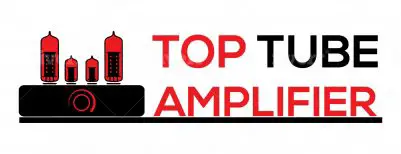When you hear a product rated as an “A,” you often think that it is the best there is. Class A tube amplifiers can qualify for that. A lot of modern tube amps have a class A mark as part of their marketing. There are also a lot of tube amps on the market that have the class AB mark.
This can be confusing for some people. A lot of people think that tube amps are all the same, but when you when you look at a class A tube amplifier schematic, you can see the big difference between the two. If you want to know more about whether you should buy a class A tube amplifier or not, here’s a brief primer on the two.
The Basics
Before we go into the differences, we should take a look at what they have that is the same. There are three basic elements of any tube amplifier: the cathode, the plate, and the grid. The cathode is the part that heats up inside the vacuum tube thanks to an electrical current. Because of the lack of any resistances thanks to the vacuum, this forms a cloud of negatively-charged electrons around the cathode.
The plate is the second part of the equation. This is a positively-charged electrode that attracts all of these electrons. The result is that the resulting electrical current is stronger than the original one.
However, tube amplifiers, especially those that are for instruments, have an additional electrode. This is the grid. This disrupts the electron flow between the cathode and the plate depending on the input it receives from an instrument. This is how a tube amp creates different sounds faithfully.
It sounds pretty basic, which is why people discovered this technology early in the past century. Thanks to a century of refinement, today’s tube amps have some modifications that make them different from each other. This is where the Class A and Class AB classification comes in.
The Big Difference
When you look at a class A tube amplifier schematic, the most noticeable thing that you’ll notice is that the Grid has a positive charge. This means that the flow to the plot is continuous, though it will fluctuate a bit now and then depending on the strength of the charge.
A Class AB tube amplifier has a different charge. It is set to the negative charge. This can disrupt the flow of electrons when a sound is too low. Normally, this would result in the sound cutting off. However, for Class AB tube amps, there is a backup tube that activates when one tube goes dark. This continues the amplification. The result is that two tubes do the job of one.
Experts call this a “push-pull” configuration. The system uses a phase inverter to share the load between the two. One of the tubes will handle all the positive charges, while the other does the negative ones.
What You Get
Each tube amp class has significant advantages and disadvantages. Let’s start with the Class A amps. A single active tube means that the amp provides a constant stream of sound. It also provides faster amplification at a much higher volume. This gets you a more responsive amp, with noticeable changes in the sound.
The real advantage is that it gives the sound smooth compression. Compression happens with amps when the current is at maximum. Thanks to the continuous flow, this is always the case for class A amps. Compression reduces the range between the highest and lowest signals in your sound. The result is it is more clear to the listener and it makes the amp “sing” better.
The problem with class A is the fact that the current is on all the time. This means that even without any sound being passed through it, the tube is still straining. This results in shorter tube life and a lower power rating than comparable class AB amps. Class A amps also consume more electricity.
Class AB amps have their own advantages. For one, thanks the fact that the two tubes share the load between them, there is less strain on them which stops any overheating issues. This ensures that can operate a lot longer than class A tubes. Additionally, class AB amps can handle higher power ratings than class As because of the power sharing.
Another advantage of class AB amps is that there is a higher headroom. This is the range of sound that an amp can create without causing distortions. For performers, ensuring that the sound they make is clear and undistorted is pretty important.
The main problem with class ABs is their slow response. Without current cycling through them constantly, they have a need to “warm-up” before they fully amplify the sound. Instead of the sharp changes in sound that you can get from a class A tube amp, you’ll notice a slow rise as the class AB adapts to the sound it amplifies.
Is it Worth It?
The big question that plagues many musicians is which amp to use. The big question that they should ask themselves is what sort of sound they would like to make.
Class A amps produce a clear sound that has no crossover distortion. The sound you’ll get is also distinctly “old-school” in feel. If you’re a fan of early 20th-century music, you’ll recognize the tone immediately.
Class AB amps can produce an equivalent good sound. However, you’ll notice a bit of distortion as the tubes do their push-and-pull. You will also hear a wider range of sound with no distortion. If you want a flexible amp that is a lot more forgiving than a class A, then you may want to get one of these.
Comparing a class A tube amplifier schematic and a class AB one, you can see the noticeable difference between the two. However, you should base your choice on the sound that you want your instrument to produce.
Need more? Check out

